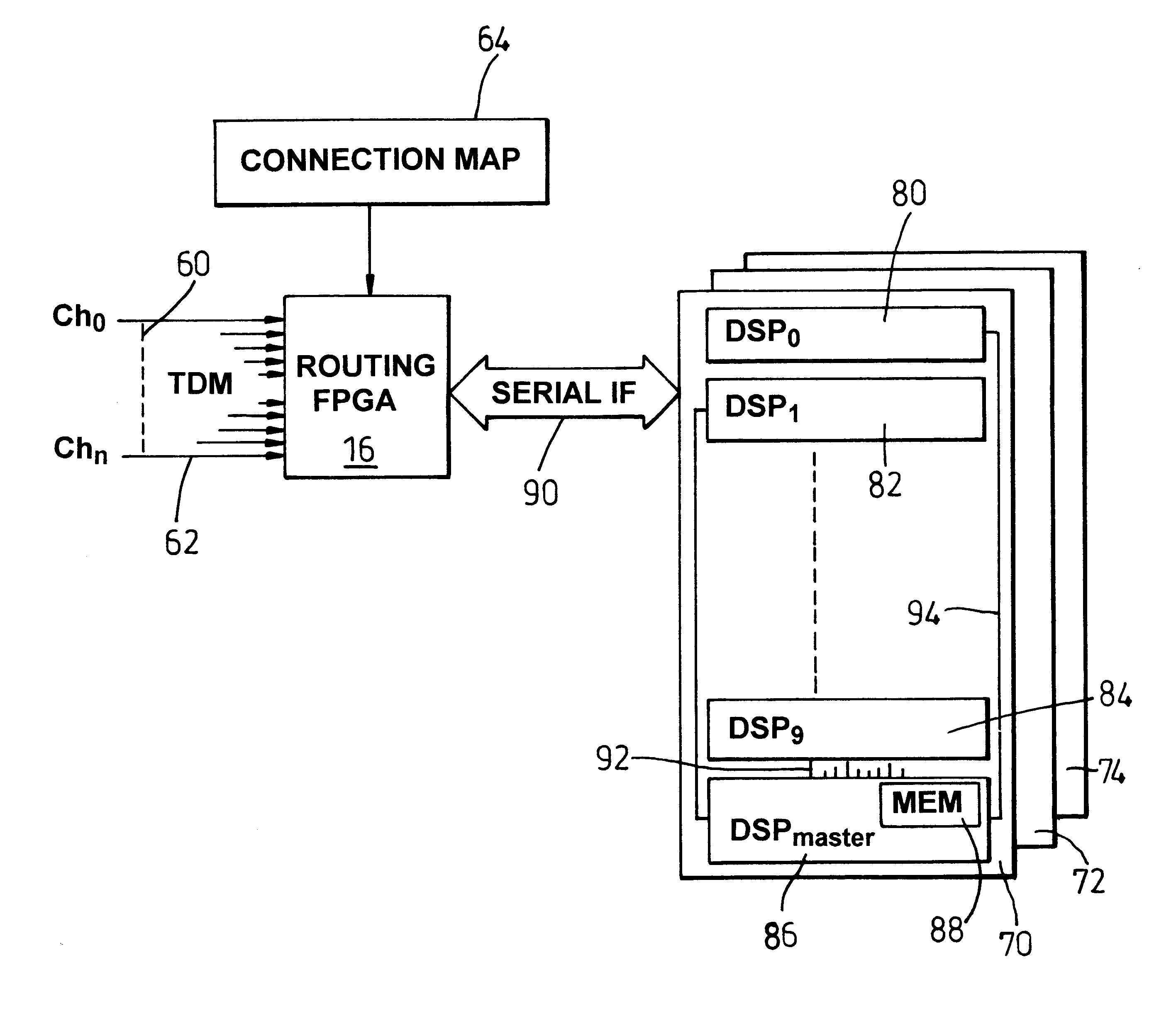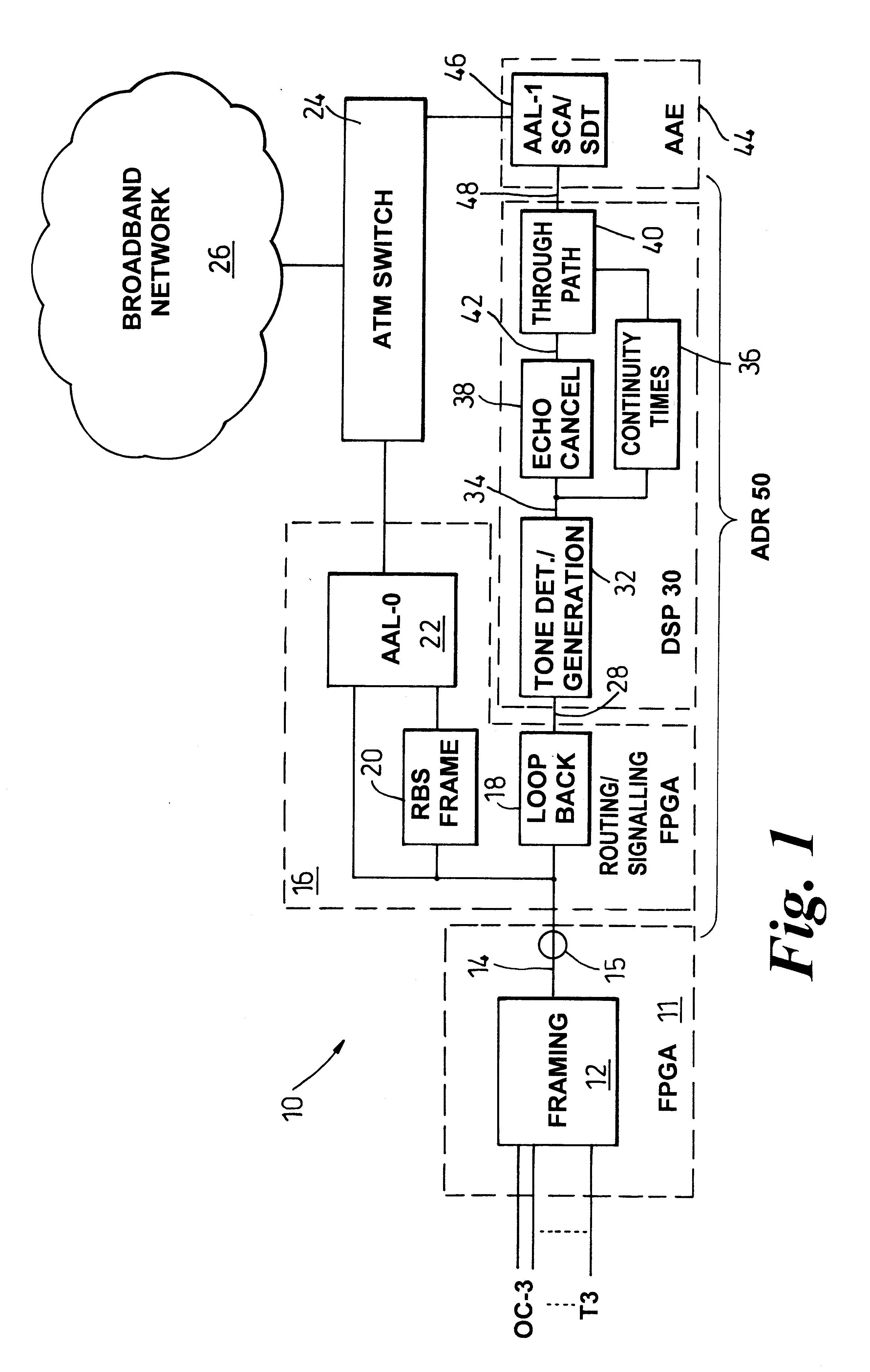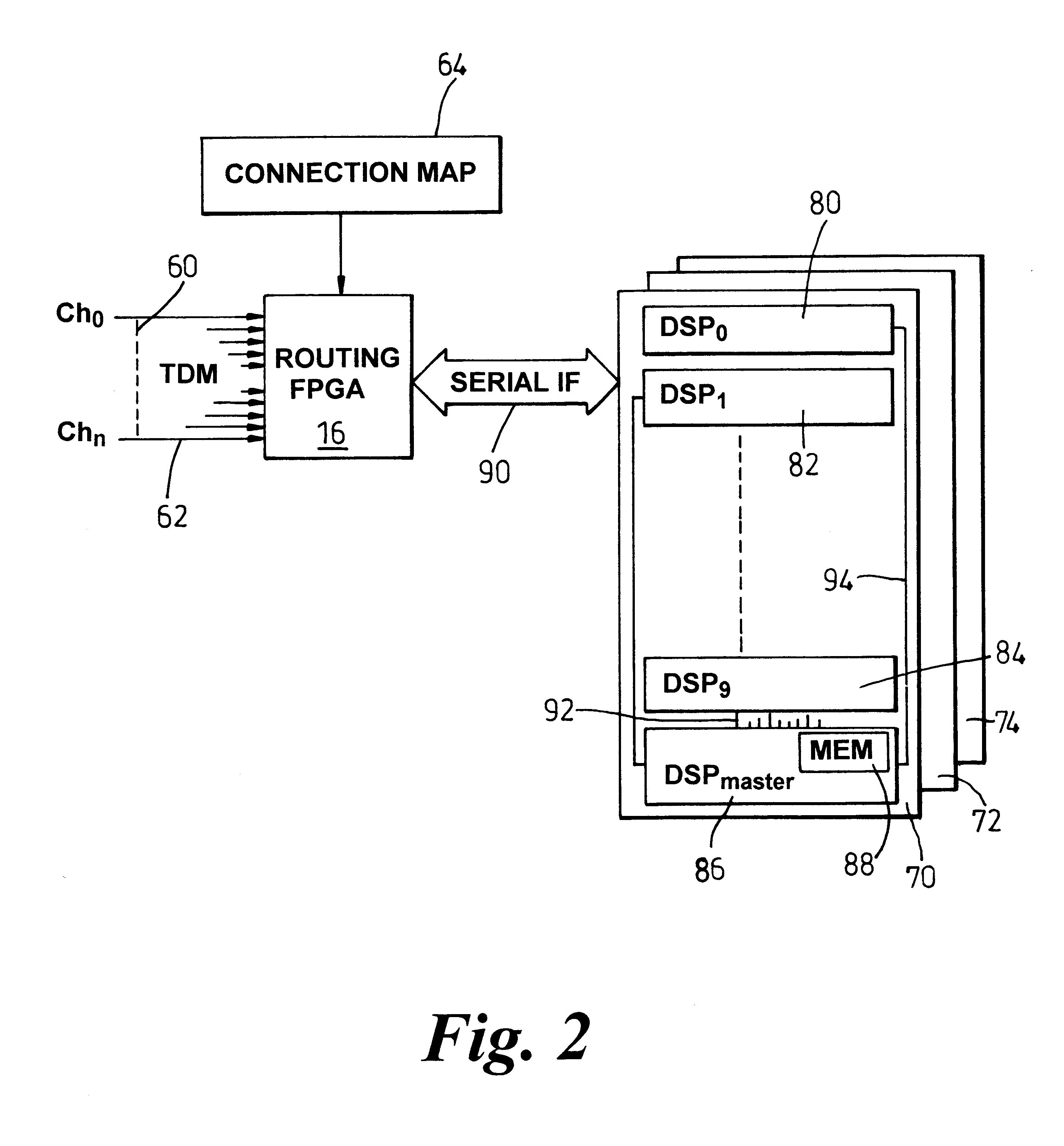Adaption resource module and operating method therefor
a technology of adaptable resource modules and operating methods, applied in data switching networks, time-division multiplexing selection, multiplex communication, etc., can solve problems such as inability to adapt to the situation, signal is likely to suffer from echo, and long distance calls (such as inter-continental calls) inherently suffer transmission delays
- Summary
- Abstract
- Description
- Claims
- Application Information
AI Technical Summary
Benefits of technology
Problems solved by technology
Method used
Image
Examples
Embodiment Construction
FIG. 1 shows a block diagram of a modularised processing platform 10 for a narrowband-broadband interface according to a preferred embodiment of the present invention. A field programmable gate array (FPGA) card 11 contains framing and control logic circuitry 12 responsive to multiple communication links, such as OC-3 or T-3 links (or their functional equivalent). Together, the communication links in the synchronous domain typically support up to approximately two thousand DS-0s (i.e. individual sixty-four kilobit per second (kbps) data or digitised voice channels, typically realised by an 8-bit pulse code modulation (PCM)). Recovered DS-0 channels are subjected to rate adaptation and some basic routing (or segregation) functions by the framing and control logic circuitry 12 that can, for example, effectively distinguish between control information and traffic (both voice and data signals).
Appropriately framed and rate adapted data 14 is coupled to a specialist routing and signallin...
PUM
 Login to View More
Login to View More Abstract
Description
Claims
Application Information
 Login to View More
Login to View More - R&D
- Intellectual Property
- Life Sciences
- Materials
- Tech Scout
- Unparalleled Data Quality
- Higher Quality Content
- 60% Fewer Hallucinations
Browse by: Latest US Patents, China's latest patents, Technical Efficacy Thesaurus, Application Domain, Technology Topic, Popular Technical Reports.
© 2025 PatSnap. All rights reserved.Legal|Privacy policy|Modern Slavery Act Transparency Statement|Sitemap|About US| Contact US: help@patsnap.com



